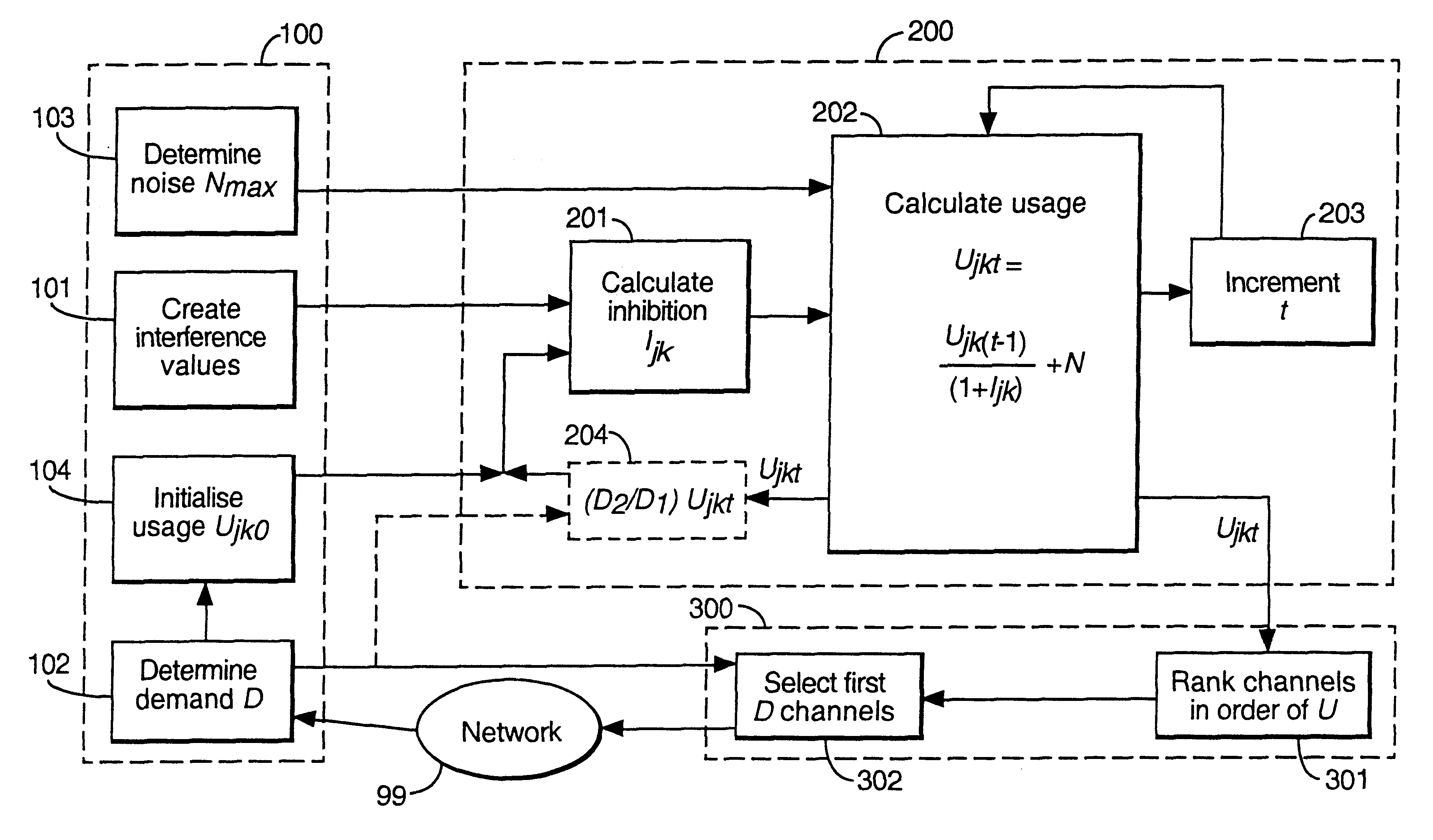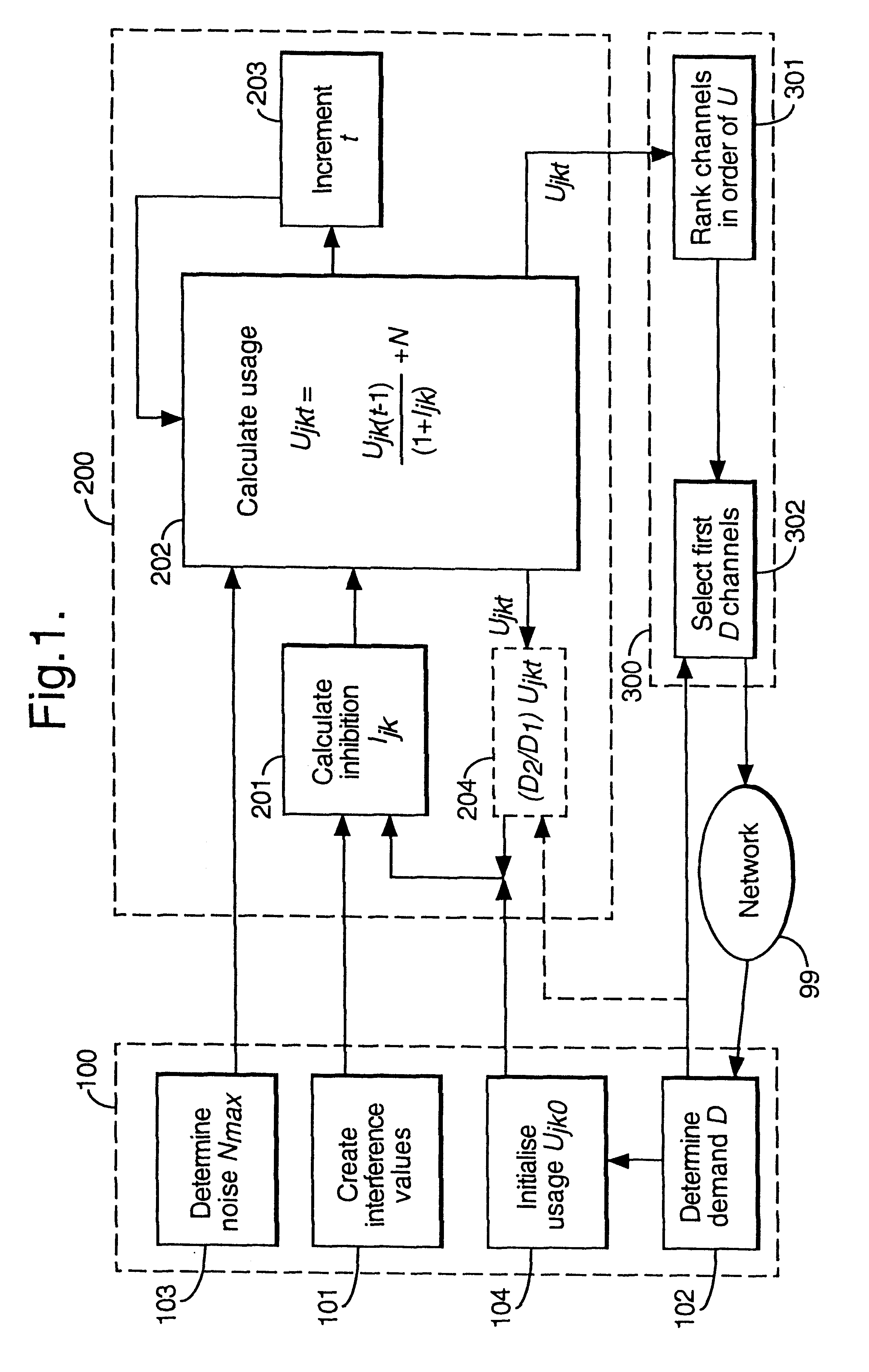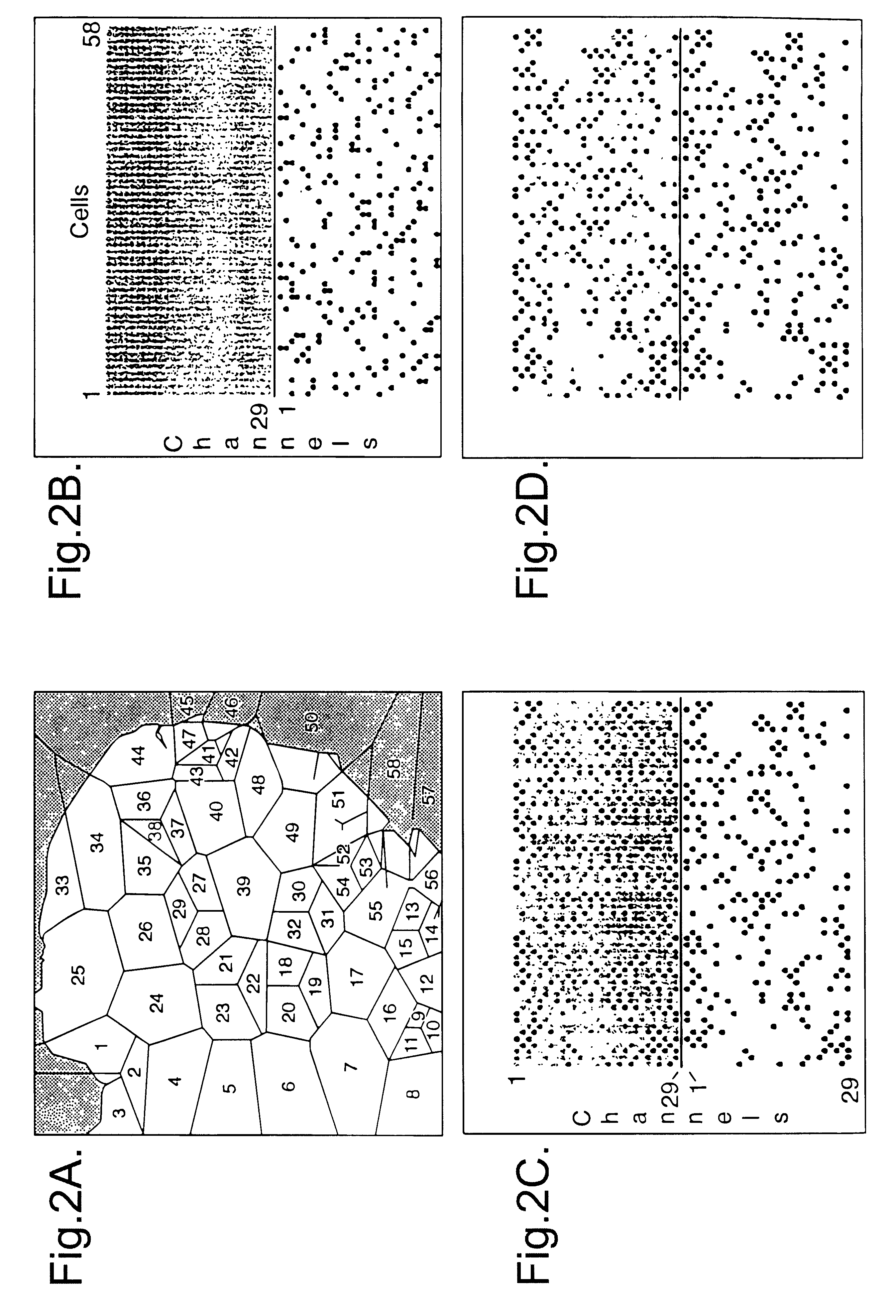Channel allocation in cellular telephony
a channel allocation and cellular telephony technology, applied in network planning, electrical equipment, network traffic/resource management, etc., can solve the problems of liable to interference, limited number of radio channels which the operator is permitted to use, and possible interference between phone calls
- Summary
- Abstract
- Description
- Claims
- Application Information
AI Technical Summary
Problems solved by technology
Method used
Image
Examples
Embodiment Construction
FIG. 1 is a schematic diagram illustrating the various functional elements of the process. These may be embodied as software on a general purpose computer. The process of producing a channel allocation plan begins with an initialisation phase of assembling the necessary information (phase 100). This is followed by an iterative progression from homogeneity towards a solution (phase 200). A solution can be extracted (phase 300) at any time but the quality of that solution improves as time goes on.
In the initialisation phase (100) an interference table is first provided (step 101). This is a j.times.j table (where j is the number of cells) which gives a value to the strength with which each cell can cause interference in each other cell. Separate tables may be used for co-channel interference and adjacent channel interference, but in both cases the full j.times.j table is used. Thus if better data is available concerning the interference values between two cells it can be incorporated ...
PUM
 Login to View More
Login to View More Abstract
Description
Claims
Application Information
 Login to View More
Login to View More - R&D
- Intellectual Property
- Life Sciences
- Materials
- Tech Scout
- Unparalleled Data Quality
- Higher Quality Content
- 60% Fewer Hallucinations
Browse by: Latest US Patents, China's latest patents, Technical Efficacy Thesaurus, Application Domain, Technology Topic, Popular Technical Reports.
© 2025 PatSnap. All rights reserved.Legal|Privacy policy|Modern Slavery Act Transparency Statement|Sitemap|About US| Contact US: help@patsnap.com



